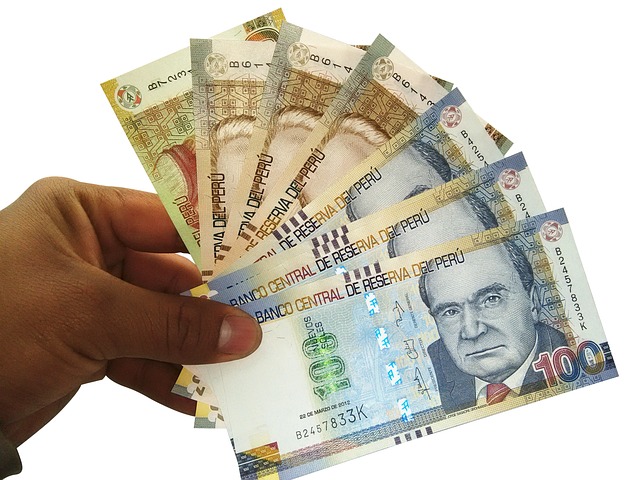July 9, 2025
Debt can feel overwhelming, especially when you have a low income. But don’t worry—it is possible to pay off debt fast with low income if you follow the right steps. This guide will show you practical ways to reduce your debt quickly, even on a tight budget.

Why Paying Off Debt Fast With Low Income Is Important
Carrying debt can hurt your financial future. High-interest rates make it harder to save. The longer you wait, the more you pay. By learning how to pay off debt fast with low income, you can:
- Reduce stress
- Save money on interest
- Improve your credit score
- Gain financial freedom
Now, let’s dive into the best strategies. For more tips on managing finances, check out The Complete Guide: How to Build Wealth in 2025.
1. Track Your Spending and Create a Budget
The first step to pay off debt fast with low income is knowing where your money goes.
How to Track Your Expenses
- Write down every expense for a month.
- Use apps like Mint or YNAB to track spending.
- Separate needs (rent, food) from wants (eating out, shopping).
Create a Strict Budget
- Follow the 50/30/20 rule:
- 50% for needs (rent, bills).
- 30% for wants (entertainment).
- 20% for debt payments and savings.
- Cut unnecessary expenses (subscriptions, dining out).
A budget helps you find extra money to pay off debt fast with low income. For business owners, The Best Way to Finance a Business in 2025 offers additional financial strategies.
2. Increase Your Income
Since your income is low, finding extra cash can speed up debt repayment.
Ways to Earn More Money
- Side Hustles: Freelancing, delivery gigs (Uber Eats, DoorDash).
- Sell Unused Items: Clothes, electronics on eBay or Facebook Marketplace.
- Part-Time Jobs: Retail, tutoring, or remote work.
Even an extra $200 a month can help you pay off debt fast with low income. If you’re interested in investments, read Stock Market News and Analysis for potential income streams.
3. Use the Debt Snowball or Avalanche Method
Two popular strategies can help you pay off debt fast with low income:
Debt Snowball Method (Best for Motivation)

- List debts from smallest to largest.
- Pay minimums on all debts.
- Put extra money toward the smallest debt.
- Repeat until all debts are gone.
Example: Pay off a $500 medical bill before a $2,000 credit card.
Debt Avalanche Method (Best for Saving Money)
- List debts by highest to lowest interest rate.
- Pay minimums on all debts.
- Put extra money toward the highest-interest debt.
- Repeat until all debts are cleared.
Example: Pay off a 24% APR credit card before a 6% student loan.
Choose the method that keeps you motivated. For tax-saving strategies, see Four Basic Tax Planning Variables: A Complete Guide.
4. Cut Expenses Drastically
Reducing spending frees up cash to pay off debt fast with low income.
Easy Ways to Save Money
- Housing: Get a roommate or move to a cheaper place.
- Food: Cook at home, use coupons, buy in bulk.
- Transportation: Use public transit or carpool.
- Utilities: Turn off lights, unplug devices, lower AC/heat.
Every dollar saved can go toward debt. Learn more about financing options in How Many Types of Financing Are There?.
5. Negotiate Lower Interest Rates
High interest makes debt harder to pay off. Try these steps:
How to Lower Your Interest Rates
- Call Creditors: Ask for a lower rate (mention financial hardship).
- Balance Transfer: Move debt to a 0% APR credit card (check NerdWallet for best cards).
- Debt Consolidation Loan: Combine debts into one lower-interest loan.
Lower rates mean more of your payment goes toward the principal. For economic insights, read Oil Price Forecast: Is Oil Expected to Go Up or Down?.
6. Use Windfalls to Pay Off Debt
Unexpected money can help you pay off debt fast with low income.
Sources of Extra Cash
- Tax refunds
- Bonuses at work
- Gifts or inheritance
- Side hustle earnings
Instead of spending this money, use it to reduce debt. For investment comparisons, see Value Fund vs. Growth Fund: Which Is Better?.
7. Avoid Taking on New Debt
While paying off debt, don’t add more.
How to Stay Debt-Free
- Use cash or debit instead of credit cards.
- Build a small emergency fund ($500-$1,000).
- Say no to unnecessary loans.
Stopping new debt helps you focus on clearing existing balances. For tax deductions, check Income Tax Deductions Chart 2024: A Complete Guide.
8. Seek Professional Help If Needed
If debt feels impossible, get help.
Where to Find Help
- Nonprofit Credit Counseling: Visit NFCC for free advice.
- Debt Management Plans (DMP): Agencies negotiate lower payments.
- Bankruptcy (Last Resort): Consult a lawyer if debts are unmanageable.
Professional help can make repayment easier. Learn about financial roles in What Is a Business Finance Role?.
Additional Resources
- Federal Trade Commission – Debt Relief
- Consumer Financial Protection Bureau
- The 7% Rule in Stocks: A Simple Guide
- The 3-Generation Rule of Wealth: Why Most Families Lose It
FAQs: How to Pay Off Debt Fast With Low Income (Detailed Guide)
1. Is it really possible to pay off debt with a low income?
Absolutely! While challenging, many people successfully eliminate debt on limited incomes through strategic planning. The key is creating a realistic budget, finding ways to increase your income (even slightly), and staying disciplined with payments. Even small extra payments can make a significant difference over time by reducing interest charges.
2. What’s the difference between Debt Snowball and Avalanche methods?
- Debt Snowball: Focuses on paying off smallest debts first regardless of interest rates. This builds quick wins and motivation as you eliminate entire debts faster.
- Debt Avalanche: Targets debts with highest interest rates first, saving you more money long-term but may take longer to see progress.
Best choice: Snowball works better if you need motivation; Avalanche is mathematically better for saving money.
3. How can I realistically lower my interest rates?
Several proven methods:
- Call creditors directly: Explain your situation honestly and ask for rate reductions (works about 30-40% of the time)
- Balance transfer cards: Move debt to 0% APR cards (typically for 12-18 months)
- Debt consolidation loans: Combine multiple debts into one lower-interest loan
- Credit union options: Often offer lower rates than big banks
4. Should I save money while paying off debt?
Yes, but strategically:
- First build a mini emergency fund ($500-$1,000) to avoid new debt from unexpected expenses
- Then focus maximum payments on debt
- After debt-free, build 3-6 months’ expenses
This “snowball” approach prevents backsliding into more debt.
5. What’s the absolute fastest way to become debt-free?
The turbo-charged approach combines:
- Income boosts: Take on side gigs (delivery, freelancing, etc.)
- Extreme budgeting: Cut all non-essentials (dining out, subscriptions)
- Debt avalanche: Attack highest-interest debt first
- Windfall allocation: Use tax refunds/bonuses for debt
This aggressive method can cut repayment time by 50-70%.
6. How do I break the credit card habit while paying debt?
Behavioral strategies that work:
- Physical barriers: Freeze cards in a block of ice
- Digital barriers: Remove saved cards from online stores
- Cash system: Use envelope budgeting for daily expenses
- Accountability: Share goals with a trusted friend
7. What if I literally can’t make minimum payments?
Immediate action steps:
- Contact creditors to request:
- Hardship programs
- Reduced payments
- Temporary forbearance
- Seek non-profit credit counseling (NFCC)
- Explore debt management plans (DMPs)
Avoid ignoring payments – this worsens the situation.
8. How does debt settlement affect my credit?
The reality:
- Credit impact: Can drop scores 100+ points initially
- Long-term: Better than bankruptcy (removed after 7 years)
- Alternatives: Always try negotiation/consolidation first
9. What percentage of income should go to debt?
Recommended breakdown:
- Essentials: 50% (housing, food, utilities)
- Debt payments: 20-30%
- Other: 20-30% (savings, discretionary)
Even an extra 5% toward debt makes a big difference.
10. When does a consolidation loan make sense?
Only when:
- New loan interest is LOWER than current rates
- You can commit to not accumulating new debt
- Fees don’t outweigh savings
Calculate carefully using online loan calculators.
11. How bad is bankruptcy really?
The hard truth:
- Chapter 7: Stays on report 10 years
- Chapter 13: Stays 7 years
- Impact: Makes renting/borrowing difficult
- Last resort: Only consider after exploring all options
12. How do I maintain motivation for years?
Proven techniques:
- Visual debt tracker on your fridge
- Small rewards for milestones (e.g., $50 debt paid = $5 treat)
- Join online debt-free communities
- Calculate daily interest savings as motivation
13. What’s the biggest debt payoff mistake?
Paying only minimums. Here’s why:
- Credit cards: Can take 15+ years to pay off
- You’ll pay 2-3x the original debt in interest
- Always pay at least 1.5x the minimum
14. How long until I’m debt-free?
Depends on:
- Total debt amount
- Interest rates
- Extra payments you can make
Example: $10,000 at 15% APR:
- Minimum payments ($200): 8+ years
- $400/month: 2.5 years
Use a debt calculator for your situation.
15. Where can I get legitimate free help?
Trusted resources:
- Nonprofits: NFCC (1-800-388-2227)
- Government: FTC Debt Relief info
- Community: Local credit counseling agencies
- Online: Reddit’s r/personalfinance community
Avoid any service that:
- Charges upfront fees
- Guarantees debt elimination
- Asks you to stop paying creditors
Pro Tip: After becoming debt-free, use these strategies to build wealth: